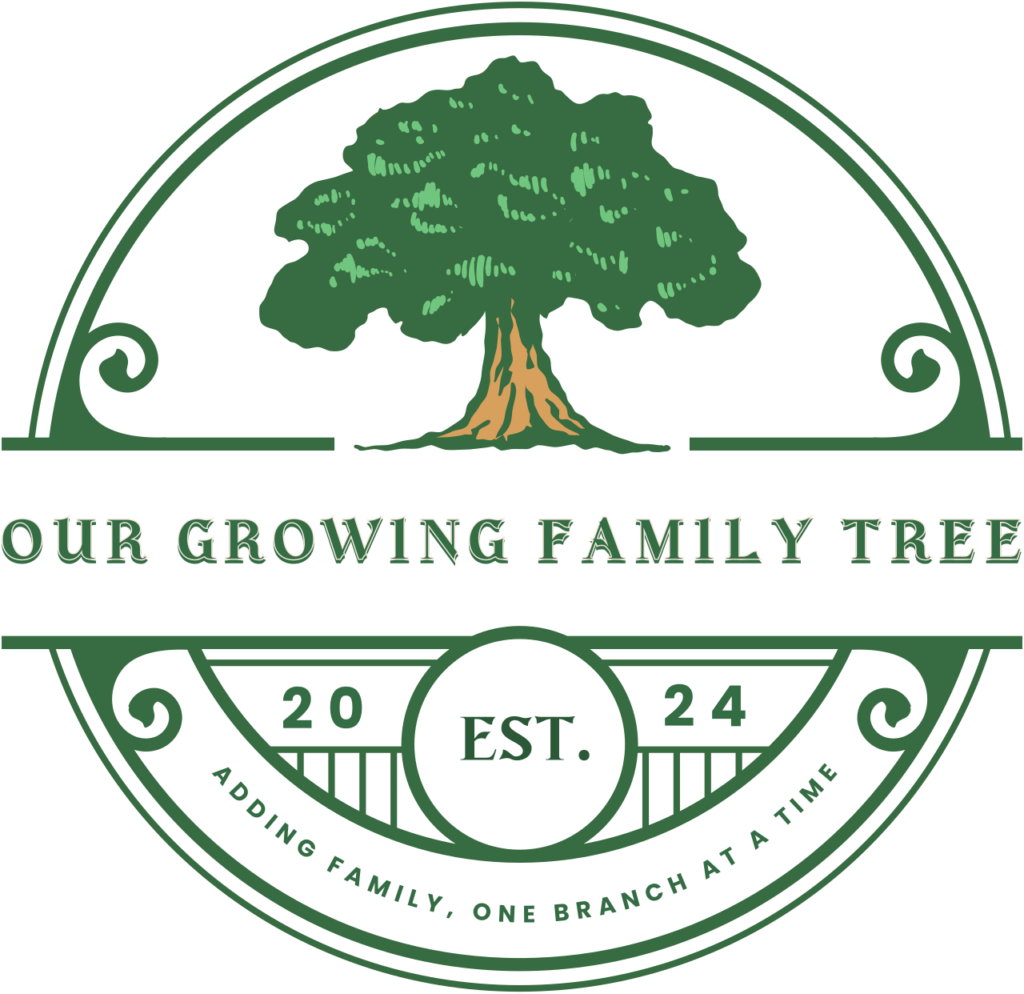
This week’s #52Ancestors prompt is “Challenge.” And let me tell you—I’ve had my fair share of research challenges. But my biggest one? The one that keeps me up at night? Tracking down my paternal great-great-grandfather in Sweden.
I’ve always been fascinated by my Swedish heritage. Ever since I learned that my grandfather, David Sten, immigrated to the U.S. from Sweden at just 18 years old, I’ve wanted to know more. Who were his ancestors? Where did they come from? It’s been a mystery I can’t let go of.
The Beginning: A Rough Sketch
Back in the pre-Internet days, researching Swedish ancestry felt almost impossible. I had a rough family tree—hand-drawn my aunt (I believe) and given to me years ago. On that tree, my grandfather’s father was listed as Sven Sten, and his mother as Pennilla Olsen.
Great, a starting point! But when I asked my grandfather if he knew who his grandfather was, he shrugged. He had no idea. And just like that, I had a mystery to solve—a mystery that’s been haunting me ever since.
Life Got in the Way
I started with what I knew. In the late 1980s, my knowledge was limited:
- David Sten was born David Svensson Sten in March 1908 in Kristianstad, Sweden.
- His father’s name was Sven Svensson.
- His grandmother’s name was Sissa.
Not much to go on, right? And unfortunately, teenage me had “better” things to do than ask my grandfather questions—something I deeply regret now. The little information I had sat in a folder, untouched for years. Life happened. College, relationships, marriage… You know the drill. I was lucky my grandfather was there for my wedding, but I never asked the questions. I wish I had.
Enter: The Internet
And then, the Internet arrived. Suddenly, I had access to records I never thought I’d see. Time and money are always barriers, but now, infinite possibilities lay ahead.
Finally, in the last couple of years, I got serious about my research.
The Big Mystery
This #52Ancestors prompt couldn’t be more fitting. My research challenge is still ongoing. My research objective:
Who was the father of Sven Svensson, born 13 Mar 1867, in Näsum, Kristianstad, Sweden, to Sissa Andersdotter (born 24 Mar 1847)?
Digging into the Swedish Records
I started by tracking down Sven’s birth record on ArkivDigital.com, a site dedicated to digitizing Swedish records. And wow—what a resource!
Here’s what I found:

Näsum Parish, Kristianstad County, Sweden, BiS (Population of Sweden) 1800-1947, ArkivDigital: Näsum CI:8 (1862-1867) Image: 880 Page: 85, entry for Sven; digital image, ArkivDigital (https://app.arkivdigital.se/volume/v100653a : accessed 1 Feb 2025)
- Sven was entry number 22, born March 19, 1867, baptized March 24, 1867.
- The record listed only his mother, Sissa Andersdotter—confirming that Sven was born out of wedlock.
- Sissa lived at No. 6 Östad, which linked to a household examination book.
- Sven’s godparents were:
- Inga Sunesdotter, a widow from Jemshög. Could she be related to Sissa?
- Sven Bengtsson, who lived in the same place as Sissa.
- Sissa was 20 years old when she gave birth.
- The Kyrkotagning (churching) column was empty—suggesting she may not have been welcomed back into the church.
- However, she received absolution on October 6, 1867.
Understanding the Swedish Birth Records
For anyone researching Swedish ancestors, understanding birth records is crucial. These documents follow a standard format, and knowing what each column means can help make sense of your findings.
Here’s a breakdown of the Swedish Birth & Baptism Book (Födelse- och Dop-Bok) columns and their translations:
Page One (Birth & Baptism Details)
- Inskrivnings-nummer – Registration number (entry number in the birth register).
- Födelse- – Birth (month and day of birth).
- Döpelse- – Baptism (month and day of baptism).
- Kön – Gender (man = male, qvin = female).
- Dopnamn – Baptismal name (the given name of the child).
- Föräldrarnes – Parents (includes name, status, occupation, nationality, and religious denomination if foreign, as well as the place of birth if not local).
- Hemvist – Residence (jemte pagina i husförhörsboken = along with page reference in the household examination book).
- Tillhör Adel – Belongs to the nobility (indicates noble status, if applicable).
Page Two (Additional Details)
- Moderns ålder – Mother’s age.
- Förlossnings-biträde – Birth assistant (midwife or other person who assisted during the birth).
- Dop-Vittnen – Baptismal witnesses (godparents or family members present at the baptism).
- Kyrkotagning – Churching (a religious ceremony where the mother was formally welcomed back to the church after childbirth).
- Absolution – Absolution (if applicable, often noted for unwed mothers who underwent a church penance).
- Särskilda anteckningar – Special notes (additional remarks related to the birth, baptism, or circumstances of the child and parents).
For Sven’s birth record:
- The word “oäkta” appears under his name, meaning “illegitimate”—indicating his parents were not married.
- Sissa’s residence at No. 6 Östad included a page reference in the household examination book—another crucial clue.
- Sven’s godparents might hold the key to uncovering more family connections.
Next Steps
My next move? Find out who Inga Sunesdotter was in Jemshög. Was she Sissa’s mother? A relative? A friend? I also need to trace Sissa’s early life and dig deeper into the household examination books in Näsum.
This mystery still has a long way to go, and I know it won’t be my last #52Ancestors post about it! Stay tuned—there’s more to uncover in the months (and years) ahead.
- By Boatbuilder – Own work, CC BY-SA 3.0
https://commons.wikimedia.org/w/index.php?curid=11605412 ↩︎

Leave a Reply